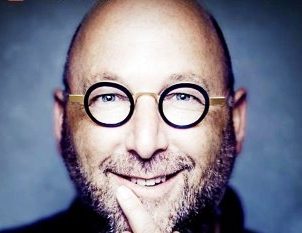News
Working through our baggage in the attic
The Shabbat minyan at 07:30 generally attracts a strange blend of insomniacs. These include young parents who might as well go to shul because they have been up since 05:00, and a regular smattering of people who want to finish their prayers by 09:00 so that they can walk to another synagogue.

HOWARD FELDMAN
Those it generally doesn’t attract, is a visiting group from the LGBTQ+ (lesbian, gay, bisexual, transgender, queer questioning) community.
Which is what made this past Shabbat so unique.
Following the suicide of Adam Seef a few weeks ago, I devoted my column in the SA Jewish Report to the homophobia of some within the orthodox community. The article was terribly received by a few, who went to some lengths to intimidate me, and well received by others.
Rabbi Gabi Bookatz of Waverley Shul was encouraged by the article to deal with homophobia from the pulpit, and Rabbi Jonathan Glass of the Mizrachi early minyan chose to address it in a panel discussion.
The panel initially didn’t include representation from the LGBTQ+ community. Understandably, they weren’t comfortable with being “spoken about” rather than spoken to. Rabbi Glass immediately corrected this, and invited Professor David Bilchitz to contribute.
The initial discomfort was palpable. It dissipated when Glass initiated the conversation. He began with two apologies: first, for his initial mistake of not inviting representation from the LGBTQ+ community, and second, for the mistakes he and other panellists were likely to make in the course of the discussion.
He explained that terminology and past socialisation would probably lead to the use of incorrect and possibly offensive comments. He assured the more than 100 people present that the intention and goal was positive, and that this was the first step towards acceptance.
I shared my thoughts, including the story by novelist Shalom Auslander, who, his book, Hope, tells the story of a man who feels tremendously burdened by the past. And so, he finds a small town in America where there is no history at all. He further buys a farmhouse that has even less history.
It’s only after moving in that he hears noises in the attic. It’s a long story, but (spoiler alert), he finds none other than Anne Frank living up there. She has survived the war, and is trying to write a sequel to her famous biography. Not an easy task considering how the first book ended.
I told this story because I believe that we all have an Anne Frank in our attic. We have grown up in an environment that was openly racist and homophobic. We might cognitively know better, but it will take a tremendous amount of work to rid ourselves of our ingrained prejudice. Like the protagonist, we won’t be able to out-run it and find a place that has no history.
I was followed by Professor Bilchitz, who took time to explain the terminology and principles that are required in order to have meaningful dialogue.
Bilchitz grew up in the community, and was part of Bnei Akiva. What followed was an honest and authentic account of his journey. Particularly powerful for me was the statement that his story and that of others in the LGBTQ+ community could have ended the same way as Adam Seef’s did.
Rabbi Ilan Raanan spoke about education and acceptance, and Mandy Magid, a clinical psychologist in private practice, gave her perspective. A number of people made powerful, important, and brave statements.
It wasn’t easy for anyone. For a community raised and conditioned not to speak of homosexuality, the fact that the conversation was happening in this space might have been particularly uncomfortable.
And, for members of the LGBTQ+ community, who might have felt ostracised by the people they were engaging with, I imagine it must have been particularly hard.
But everyone survived. And, though no one believes “our job here is done”, most felt a very important first step had been taken.
The fact that an orthodox community could host such a panel, and do so in the positive, warm and sensitive way it did, isn’t to be underestimated.
Perhaps, if we continue on this journey, we will be able to bring Anne Frank downstairs after all.